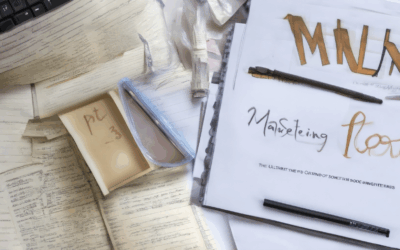Fiction writing can be both an art and a challenge, requiring a blend of creativity, technique, and patience. For aspiring writers, the process often feels overwhelming, especially when faced with the vast array of fiction writing techniques and styles to master. Whether you’re just beginning or looking to refine your skills, this comprehensive guide aims to provide you with the tools and insights needed to unlock your creative potential. From understanding the basics of fiction writing to exploring different styles and styles guides, this guide covers everything you need to know to become a confident and skilled fiction writer. By breaking down the key components of successful fiction writing, this guide offers practical advice, real-world examples, and actionable strategies to help you craft compelling stories that resonate with readers. With this guide in hand, you’ll gain the knowledge and confidence to approach your writing with renewed enthusiasm and a clear roadmap for success.
Key Takeaways
- Develop Relatable, Multi-Dimensional Characters: Create characters with distinct traits, flaws, and motivations to resonate deeply with readers.
- Craft a Compelling Plot Structure: Use the three-act structure—setup, conflict, resolution—to drive your narrative forward with a strong central conflict.
- Immerse Readers with Vivid Settings: Describe environments with sensory details to evoke vivid imagery and enhance the story’s mood.
- Build a Believable World: Construct a detailed universe with consistent rules and environments that feel authentic to your story.
- Sustain Tension Through Conflict: Use internal and external conflicts to drive character growth and maintain reader engagement.
- Foreshadow Effectively: Plant subtle clues to hint at future events, creating suspense and guiding readers through your narrative.
- Balance Pacing Thoughtfully: Alternate between slow and fast-paced moments to maintain momentum and emotional depth.
- Experiment with Narrative Voices: Try different perspectives, including limited or multiple viewpoints, to offer unique insights into your story.
- Show, Don’t Tell: Use sensory details and actions to convey emotions and thoughts, making your writing more impactful.
- Refine Your Manuscript: Edit for clarity, remove redundancies, and ensure consistency in tone and style for a polished final product.
By mastering these techniques, you can create stories that captivate readers and leave a lasting impression. Explore more tips and resources on James Whitfield Thomson to further enhance your writing skills.

Effective Fiction Writing Techniques
To craft compelling stories, consider these proven techniques:
- Character Development : Create well-rounded characters with distinct motivations and flaws. Use the “Three Act Structure” to guide their journey, ensuring growth and conflict resolution. Explore more on James Whitfield Thomson’s insights on character development
- Plot Structure : Employ the “Hero’s Journey” framework to create engaging narratives. Include key elements like the ordinary world, call to adventure, and climax to maintain reader interest. Learn about plot structure from our comprehensive guide
- Setting : Use setting to enhance themes and mood. Whether urban, rural, or fantastical, immerse readers by describing environments vividly. Discover how settings can elevate your story
- Dialogue : Write realistic conversations that reveal character traits and drive the plot. Use active listening and unique speech patterns to make interactions feel natural. Master dialogue techniques here
- Pacing : Balance slow and fast-paced sections to maintain engagement. Use short chapters or scenes to sustain attention and build suspense. Understand pacing in storytelling
- Revision : Edit ruthlessly to refine your manuscript. Remove unnecessary words, tighten descriptions, and ensure consistency in tone and style. Get tips on effective revising
By mastering these techniques, you can create stories that resonate emotionally and captivate readers.
What Are the Best Fiction Writing Techniques to Include in Your Guide?
Here are the best fiction writing techniques to enhance your guide and provide valuable insights for aspiring writers:
- Character Development : Create complex characters with distinct personalities, backgrounds, and motivations. Use detailed descriptions and show their growth through their actions and interactions.
- Plot Structure : Craft a compelling narrative arc with a strong hook, rising action, climax, and resolution. Ensure the plot moves smoothly while maintaining reader engagement.
- Setting : Develop vivid and immersive settings that play a crucial role in the story. Whether it’s a historical city or a futuristic world, the setting should feel real and contribute to the atmosphere.
- Pacing : Balance slow and fast-paced scenes to maintain the reader’s interest. Use descriptive language to convey the passage of time effectively.
- Dialogue : Write realistic and meaningful conversations that reveal character traits and advance the plot. Vary sentence structures to match the speaker’s personality.
- Point of View : Choose the right perspective (first, second, or third) based on the story’s requirements. Shift perspectives only when necessary and signal the change clearly.
- Imagery and Metaphors : Use sensory details and metaphors to create vivid imagery and deepen the emotional impact of your writing.
- Conflict and Tension : Introduce internal and external conflicts to drive the story forward. Maintain tension to keep the reader invested in the outcome.
- World-Building : Expand beyond the immediate story to create a cohesive universe. Develop rules, history, and lore that support the narrative.
- Editing and Revising : Continuously edit and revise your work to refine grammar, pacing, and clarity. Seek feedback from peers or professionals to identify strengths and weaknesses.
By mastering these techniques, you can create engaging and impactful fiction that resonates with readers. Explore more resources and tips on James Whitfield Thomson ‘s literary platform for further insights and guidance.

Key Components of a Good Fiction Writing Techniques Guide
A great fiction writing techniques guide should be comprehensive, offering detailed insights and practical advice to help writers improve their craft. Here are the essential elements that make such a guide effective:
1. Character Development
Character development is the cornerstone of compelling fiction. A good guide will teach writers how to create relatable and multi-dimensional characters. This includes:
- Creating detailed character profiles
- Developing backstory and motivations
- Exploring character arcs and growth
- Writing realistic and consistent dialogue
2. Plot Structure
A well-structured plot is the framework of your story. Effective plotting involves:
- Establishing a strong premise
- Creating a clear protagonist and antagonist
- Designing a conflict that drives the narrative
- Building suspense and pacing
3. Setting
Setting plays a crucial role in immersing readers in your story. A good guide will cover:
- Creating vivid and believable worlds
- Using setting to enhance themes and mood
- Describing environments with sensory details
- Integrating setting into the plot seamlessly
4. Dialogue
Dialogue is more than just conversation—it’s a tool for character revelation and plot advancement. Key aspects include:
- Writing authentic and natural speech
- Using dialogue to reveal character traits
- Creating dynamic and engaging conversations
- Pacing dialogue to match the story’s tone
5. Descriptive Writing
Strong descriptive writing brings settings, characters, and scenes to life. Essential elements to master:
- Using sensory details effectively
- Painting clear and vivid imagery
- Varied sentence structure and vocabulary
- Creating atmosphere through language
6. Pacing
Pacing is the rhythm of your story, affecting engagement and tension. A good guide will explain:
- How to balance slow and fast-paced moments
- Using foreshadowing and clues
- Building anticipation and intrigue
- Maintaining a steady narrative flow
7. Research and Inspiration
Incorporating real-world elements adds authenticity to your work. Tips include:
- Studying your genre’s history
- Using diverse influences and sources
- Engaging with literature and media
- Learning from successful authors
8. Editing and Revising
Refining your draft is crucial for polished writing. A good guide will emphasize:
- Identifying strengths and weaknesses
- Eliminating redundancies
- Ensuring consistency
- Polishing language and style
9. Feedback and Iteration
Gathering feedback and refining your work is part of the creative process. Key points:
- Seeking constructive criticism
- Implementing feedback effectively
- Embracing the editing process
- Continuously learning and growing
10. Additional Resources
To deepen your understanding, explore these recommended resources:
- James Whitfield Thomson – Discover writing tips and insights from a leading literary figure.
- Writing.ie – Ireland’s premier writing resource with workshops and guides.
- Writer’s Digest – Offers courses, articles, and community support for writers.
By mastering these components, you’ll create fiction that captivates readers and stands out in the literary world.

Fiction Writing Techniques to Craft Compelling Stories
Here are the key fiction writing techniques that will help you create engaging and memorable stories:
- Character Development
- Create relatable and multi-dimensional characters.
- Use backstory to add depth and motivation to your characters.
- Develop unique personalities that stand out and resonate with readers.
- Plot Structure
- Employ the three-act structure: Setup, Conflict, Resolution.
- Introduce a central conflict early and sustain tension throughout.
- Use subplots to add layers to your narrative.
- Setting
- Choose a setting that enhances your story.
- Research historical or fictional locations to add authenticity.
- Use setting to reflect the mood and themes of your story.
- World-Building
- Develop a believable world that feels real.
- Create detailed environments that immerse readers.
- Incorporate rules and details that align with your story universe.
- Conflict and Tension
- Establish internal and external conflicts.
- Use conflict to drive character growth and plot progression.
- Sustain tension through pacing and foreshadowing.
- Foreshadowing
- Plant clues and hints that foreshadow future events.
- Use subtle hints to guide readers toward key plot points.
- Create suspense by suggesting possibilities.
- Pacing
- Balance slow and fast-paced moments to maintain engagement.
- Use descriptive language to convey time passing.
- Adjust pacing based on the emotional weight of scenes.
- Point of View and Narrative Voice
- Experiment with first-person, second-person, and third-person perspectives.
- Choose a voice that matches your story’s tone and style.
- Use an unreliable narrator to add intrigue and depth.
- Show, Don’t Tell
- Use sensory details to reveal emotions and thoughts.
- Depict actions and dialogue to convey character feelings.
- Avoid exposition-heavy sentences to keep readers engaged.
- Multiple Perspectives
- Switch perspectives to explore different characters’ experiences.
- Use limited perspectives to maintain narrative focus.
- Transition between perspectives smoothly.
- Editing and Revising
- Refine your manuscript to tighten dialogue and descriptions.
- Remove unnecessary words and streamline narratives.
- Ensure consistency in tone and style throughout.
By mastering these techniques, you can craft stories that captivate readers and leave a lasting impression. Explore more resources and tips on James Whitfield Thomson to further enhance your writing skills.
What Are the Most Effective Fiction Writing Techniques for Creating Engaging Stories?
Creating engaging stories requires a blend of creativity, structure, and emotional resonance. Here are some proven fiction writing techniques that can help you craft compelling narratives:
- Develop Strong Character Development :
- Create relatable and multi-dimensional characters. Give them distinct traits, flaws, and motivations that drive the story forward.
- Use internal monologue and dialogue to reveal their thoughts and emotions, making them feel real to readers.
- Explore tips for developing characters on our resource page.
- Craft a Solid Plot Structure :
- Utilize the three-act structure: Setup, Conflict, and Resolution.
- Introduce the protagonist early and establish the central conflict or stakes.
- Learn more about plotting your story effectively.
- Immerse Readers with Vivid Settings :
- Describe environments in a way that evokes sensory details. Whether it’s a bustling city or a serene forest, make the reader feel like they’re experiencing it firsthand.
- Use setting as a character in itself, reflecting the mood and themes of the story.
- Discover how to set the scene effectively.
- Pace the Story Thoughtfully :
- Balance slow, reflective moments with fast-paced, action-packed sequences to maintain reader interest.
- Use foreshadowing to hint at future events without revealing too much too soon.
- Master the art of pacing .
- Write Memorable Dialogue :
- Make conversations reveal character traits and advance the plot.
- Use unique speech patterns and idiosyncrasies to differentiate characters.
- Improve your dialogue skills .
- Edit for Clarity and Impact :
- Remove unnecessary words and streamline sentences for maximum impact.
- Ensure consistency in tone and style throughout the manuscript.
- Find professional editing services to refine your work.
By combining these techniques, you can create stories that captivate readers and leave a lasting impression. Keep experimenting, read widely, and continuously seek feedback to grow as a writer.

What Are the Best Fiction Writing Techniques to Include in Your Guide?
Mastering fiction writing requires a blend of creativity, structure, and attention to detail. Here are some of the most effective techniques to include in your guide:
- Character Development: Depth your characters with detailed backgrounds, motivations, and flaws. Use techniques like the “Five Senses” method to bring them to life.
- Plot Structure: Employ the three-act structure to create compelling narratives. Include subplots and conflicts to maintain reader engagement.
- Setting: Use descriptive language to immerse readers in the story’s environment. Consider how the setting influences the characters and plot.
- Pacing: Balance slow and fast-paced scenes to maintain momentum. Use foreshadowing to hint at future events without revealing too much.
- DIALOGUE: Write realistic conversations that reveal character traits and move the story forward. Vary sentence structure for distinct voices.
- Point of View: Experiment with limited or multiple perspectives to offer unique insights into the story. Use stream-of-consciousness effectively.
- World-Building: Create a believable universe that supports your story. Develop rules for your world to make it feel authentic.
- Imagery and Metaphor: Use vivid descriptions and metaphors to enhance atmosphere and themes. Make the reader visualize the scene.
- Conflict Resolution: Show how characters overcome challenges. Explore moral dilemmas and ethical choices to deepen the story.
- Editing and Revising: Polish your manuscript by eliminating redundancies and refining your language. Seek feedback to refine your approach.
For more insights and resources on mastering these techniques, visit James Whitfield Thomson and explore their comprehensive guides on storytelling and writing.
Conclusion: By incorporating these techniques into your guide, you’ll provide readers with a wealth of knowledge to improve their fiction writing. Use the resources linked above to further enhance your skills and craft compelling stories.





0 Comments